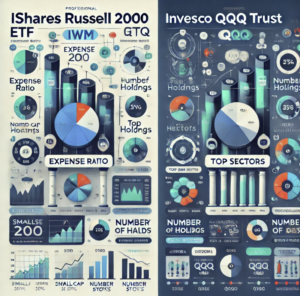
By ATGL
Updated November 29, 2024
Forex day trading can seem like a tantalizing shortcut to financial success. It’s a global playground where fortunes can be made with the right strategy and a keen eye for market movements. Before diving into the deep end of currency fluctuations, it’s critical to understand the basics. This article serves as a comprehensive guide for those at the starting line of forex day trading. From the foundational building blocks to advanced strategies and common pitfalls, this piece lays out a clear path for beginners aiming to navigate the Forex markets smartly and effectively.
What Is Forex Day Trading?
Forex day trading is the practice of buying and selling currencies within the fast-paced environment of the foreign exchange market, with all trades beginning and ending within the same trading day. Unlike long-term strategies that might hold positions over weeks or months, day trading exploits short-term price movements. Forex day traders must be highly focused and decisive, as they tap into the currency pairs’ liquidity to make multiple quick trades, capturing gains from small price changes.
This form of trading is particularly attractive to beginners due to its speculative nature and the potential for profits in a liquid market by trading during peak currency volatility. It’s essential for those involved in day trading forex to have not just the time and dedication, but also an understanding of market conditions and solid risk management strategies. As each trading day ends, positions are squared, and the slate is cleared, ready for the next day’s trading cycle in the ever-changing forex market.
How Does Forex Day Trading Work?
Forex day trading is a method of engaging with the foreign exchange market whereby traders buy and sell currency pairs with the goal of profiting from small price movements within the same trading day. The core objective is to enter and exit positions for a net gain without leaving any trades open overnight, thus avoiding the risk of any significant adverse market movements occurring outside of trading hours.
To thrive in forex day trading, individuals usually rely on technical analysis and charts to forecast future price actions. Short-term charts, like 15-minute charts, are favored tools as they provide a detailed view of price movements over shorter time spans, enabling traders to predict trends and make informed decisions quickly.
One of the key advantages of forex day trading is the absence of the Pattern Day Trading (PDT) rule, which is a regulation in the U.S. stock market that limits the number of day trades a trader can execute within a certain period unless they maintain a substantial balance in their account. Forex day traders, on the other hand, enjoy the freedom to make as many trades as they desire without such restrictions,
offering flexibility and the opportunity to capitalize on any potential profitable setup that arises throughout the trading day.
Forex day trading also requires access to sophisticated trading tools and platforms such as MetaTrader 5, which provides the advanced charting capabilities necessary for technical analysis. Professional traders use these tools to identify potential trades, manage risks, and review numerous indicators to inform their quick decision-making process.
Learning Forex Day Trading Basics
Understanding the basics of forex day trading is crucial for beginners who are looking to dive into this high-paced trading style. At its core, forex day trading revolves around the principle of making swift and strategic moves in a liquid market to profit from small price differences.
A day trader begins their day by analyzing the market conditions using technical tools and indicators. The focus is squarely on liquid markets and currency pairs that provide the opportunity for quick trades. These markets typically exhibit higher levels of market liquidity, ensuring that there are always buyers and sellers available, facilitating the rapid opening and closing of positions.
Forex day trading may seem daunting due to the need for quick thinking. It demands a trader to be nimble-fingered with executing trades at their desired price points while managing many trades simultaneously. Intraday trading strategies help traders to mitigate the risks of large price movements which can occur overnight when markets can react to news and economic events while being closed.
Moreover, the flexible nature of forex day trading gives traders the ability to open and close trades on the same day without falling foul of the PDT rule. This is particularly advantageous for those with smaller trading accounts who wish to trade frequently, as they can continue their trading activities unimpeded by balance requirements imposed upon stock traders.
When embarking on forex day trading, education is key. Traders need to learn how to interpret charts, understand the impact of geopolitical and economic news on currency prices, and practice robust risk management strategies. It’s a constantly evolving skill set that requires commitment, discipline, and a willingness to learn from each trading day’s successes and failures.
Technical Analysis Basics
Technical analysis is central to forex day trading, as it provides the tools for evaluating and forecasting future market trends based on historical price data. Through the study of chart patterns, technical indicators, such as moving averages and MACD (Moving Average Convergence Divergence), and other studies, traders can identify potential price movements and determine favorable entry and exit points in the market.
The basic premise of technical analysis is that historical price action can offer clues about future price movement. Traders look at past performance to identify trends and patterns that might repeat themselves. For instance, a support level that has stopped a currency pair from falling in the past may indicate a good point for the trader to buy, anticipating that the price will rise again from this level.
Understanding the basics of technical analysis is crucial for forex traders to predict future market performance accurately. Each trader may have a unique approach to incorporating diverse methods into their trading strategy, depending on their specific goals, risk appetite, and trading style. While some may focus on analyzing candlestick patterns and price action, others may rely on statistical indicators to make trading decisions.
Combining various elements from different types of analysis is common among professional traders and can enhance trading outcomes. For example, incorporating fundamental analysis, which considers economic indicators and news events, with technical analysis can give a more holistic view of the market, providing traders with an edge.
By mastering the spectrum of technical analysis tools, forex day traders can navigate the market more confidently and develop strategies that can increase their chances of success in the fast-paced and unpredictable world of forex trading.
Forex Day Trading Strategies You Should Know
Forex day trading stands out as a favorable approach in the trading realm, particularly for those seeking the thrill of engaging financial markets with promptness and control. This short-term strategy, widely adopted by retail traders, entails initiating and closing trades within the confines of a single trading day. A successful day trader requires a blend of focus, discipline, control, and unwavering commitment to a robust trading plan. With the forex market being one of the most liquid markets, day traders can capitalize on short-term currency price fluctuations, which demands continuous market analysis and vigilant chart monitoring.
To navigate the rapid price moves of foreign exchange, forex day traders apply various strategies, each with distinct characteristics and operational frameworks. From trend-following to scalping, these methods cater to diverse preferences, trading styles, and business environments. Nevertheless, no matter the chosen strategy, maintaining a favorable risk-reward ratio—such as 2:1 or higher—is a crucial element. It ensures that potent rewards readily eclipse potential risks, laying the foundation for a sustainable trading career. Here, we delve into some of the top strategies for beginners and seasoned traders alike, providing a snapshot of the dynamic world of forex day trading.
Trend Following
Trend trading is a principal strategy in forex day trading that involves a meticulous analysis of prevalent price trends as a guide for spotting short-term trade prospects in the same direction. This strategy can take place over various time frames, capturing the essence of price movements within a single trading day. Trend traders utilize a swath of tools—including trend lines, moving averages, and an array of technical indicators—to identify and follow trends. A keen eye on the market’s price action, such as noting higher highs or lower lows, allows traders to discern trend directions effectively. While not exclusive to day trading—positions might be held open as trends persist—trend following remains a popular choice for traders who prefer syncing their activities with the market’s rhythm.
Scalping
Scalping constitutes one of the most short-term-focused strategies in forex trading. Aimed at securing small, frequent gains, this approach hinges on reaching a high win rate and scaling up those small victories into a substantial trading account over time. The inherent logic of scalping relies on the notion that numerous small profits will accumulate significantly without the need for capturing large trends. This requires scalpers to maintain a strict exit strategy, as even a few losses can quickly erode the small increments of profit. Scalpers must manage their trades tightly, frequently opening and closing positions within the span of minutes or even seconds, to leverage momentary market opportunities. Given the thin margins, risk management is paramount to ensure that the occasional losses remain controlled and do not obliterate the gains garnered from successful trades.
Fibonacci Retracement Strategy
The Fibonacci retracement strategy is another popular tactic among forex day traders. This method employs Fibonacci levels to forecast potential areas of support and resistance in the upcoming market movements. Traders eager to implement this strategy would typically enter a trade during a rebound from the first or second key Fibonacci levels after a correction, all the while aligning with the overarching trend. A crucial aspect to watch in this strategy is the 0.5 level; a breakdown at this point can transform a correction into an opposing trend, prompting the trader to open a trade in the new direction. Trade closure decisions are made either at the beginning of a correction or at the culmination of a trend, with a trailing stop option available to protect profits. In the realm of forex day trading, the Fibonacci retracement strategy is indispensable for spotting potential market shifts and key levels.
Countertrend Trading
Diverging from the common trend-centric methodologies, countertrend trading embarks on a contrarian path. This advanced strategy sees traders scouring long-term charts to identify the primary trend, only to search for counter-movement opportunities on a shorter-term chart. Countertrend traders thrive on predicting the end of prevailing trends, seeking to capture profits from the resulting bullish or bearish turns. Unlike trend followers, countertrend practitioners prefer trading in the opposite direction once the main trend is determined. Though this strategy can offer substantial rewards, the challenge lies in accurately determining potential trend reversals, which may not be as common as trend continuations.
Range Trading
Range trading, also recognized as channel trading, is a strategy that hinges on identifying and capitalizing on typical price peak and trough patterns within a recent timeframe. Traders armed with range trading tactics inspect chart patterns to pinpoint prospective buying or selling opportunities as the market pivots within a defined price boundary. The crux of this approach is in the cyclical nature of the forex market, where prices oscillate between established support and resistance lines—addressing each high with a subsequent low and vice versa. Given the repetitive price behavior, range traders are presented regular openings for profit. However, this strategy demands a comprehensive understanding of recent price dynamics to effectively forecast market behavior within the set parameters.
Breakout Trading Strategy
The breakout trading strategy revolves around detecting instances where a currency pair has carved out a specific trading range during particular hours of the day. Traders who implement this strategy wait patiently for a breakout—a decisive price move that surpasses either the established upper or lower bounds of the range. This technique shines when the currency pair has shown a prolonged period of consolidation, hinting at a significant move on the horizon. To execute a breakout strategy, traders first dfine the range where prior support and resistance have been steadfast. They then set entry points above or below these levels to position themselves for the impending breakout. Breakout trading is especially powerful for identifying new trends in the forex market and is often one of the earliest signals that there’s a forthcoming change in market directions, providing early entry points for trend followers.
Mistakes To Avoid When Day Trading Forex
Forex day trading involves the buying and selling of currency pairs within a single trading day. Although it offers significant opportunities for profit due to market liquidity and the potential for leverage, there are key mistakes that day traders should avoid to prevent substantial losses.
Firstly, over-leveraging is a common pitfall. The high-leverage nature of forex trading can amplify gains but also losses, potentially leading to a complete loss of capital. Day traders must practice risk management strategies to safeguard their funds. Forex heatmaps can aid in risk management by providing insights into market volatility and currency correlations. Traders can use this information to diversify their portfolios and manage exposure to risk.
Secondly, ‘averaging down’ on losing positions in the hope they will recover is a risky practice. Instead of reducing losses, it often leads to increased financial damage. Successful day traders know when to cut their losses and move on.
Additionally, neglecting the impact of news announcements, such as central bank interest rate changes, can be detrimental. These events can cause significant price moves in the forex market. Staying informed and understanding how such news affects currency pairs is essential.
Lastly, forex day trading requires understanding the complex interplay of various financial markets and business environments. Ignoring these elements can blindside traders to shifts in market conditions.
By avoiding these mistakes, day traders enhance their prospects for making informed and profitable trades in the fast-paced forex market.
Become a Professional Trader With Above the Green Line
Becoming a professional trader, particularly in the high-stakes world of forex day trading, demands a solid strategy anchored by key factors such as market liquidity and volatility. A strong intraday approach should exploit these elements to capture price movements effectively.
Before diving into the live markets, aspiring professionals should cultivate their skills in a safe environment. Practicing new strategies through demo accounts or backtesting can provide valuable insights without financial risk.
Fundamental to professional trading is a robust risk management policy. Day traders must define clear parameters including risk per trade, acceptable stop lengths, and the prudent use of leverage. Without strict risk controls, traders expose themselves to potentially unrecoverable losses.
Technical analysis stands as the cornerstone of professional trading decision-making. By leveraging technical indicators, traders are better positioned to interpret price action and capitalize on short-term price moves.
Ultimately, risk tolerance is a deeply personal aspect that influences every trading decision. Recognizing one’s comfort level with different market conditions is vital in selecting a trading strategy that aligns with both financial goals and personal trading styles. Whether it’s discarding excessive risk or embracing more calculated bets, aligning strategies with one’s risk tolerance is key in the journey to becoming a successful day trader and join Above the Green Line.






